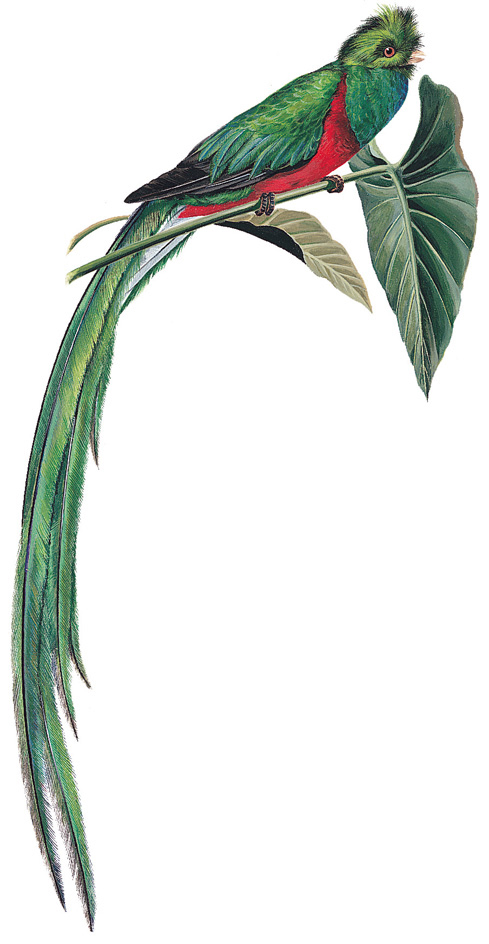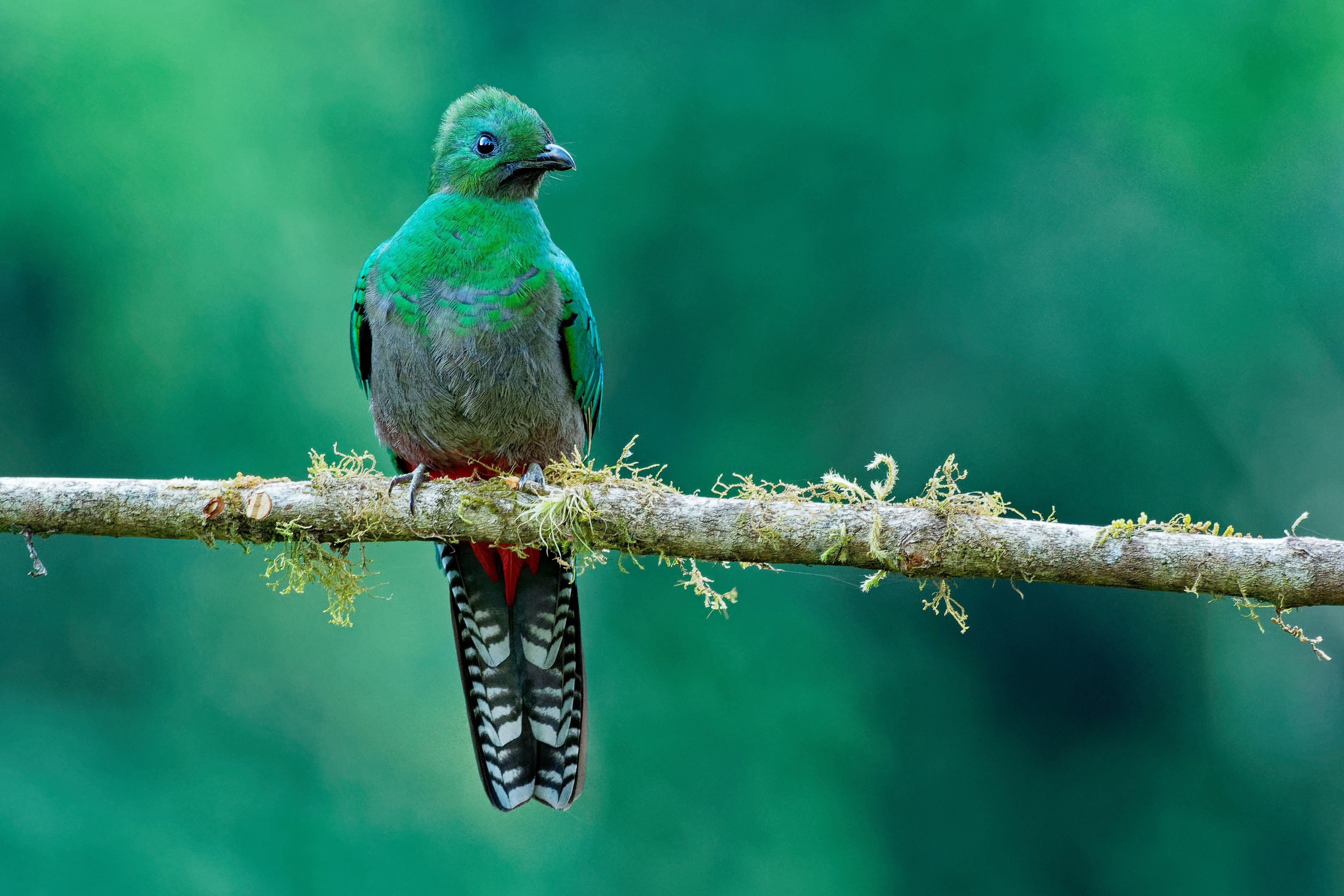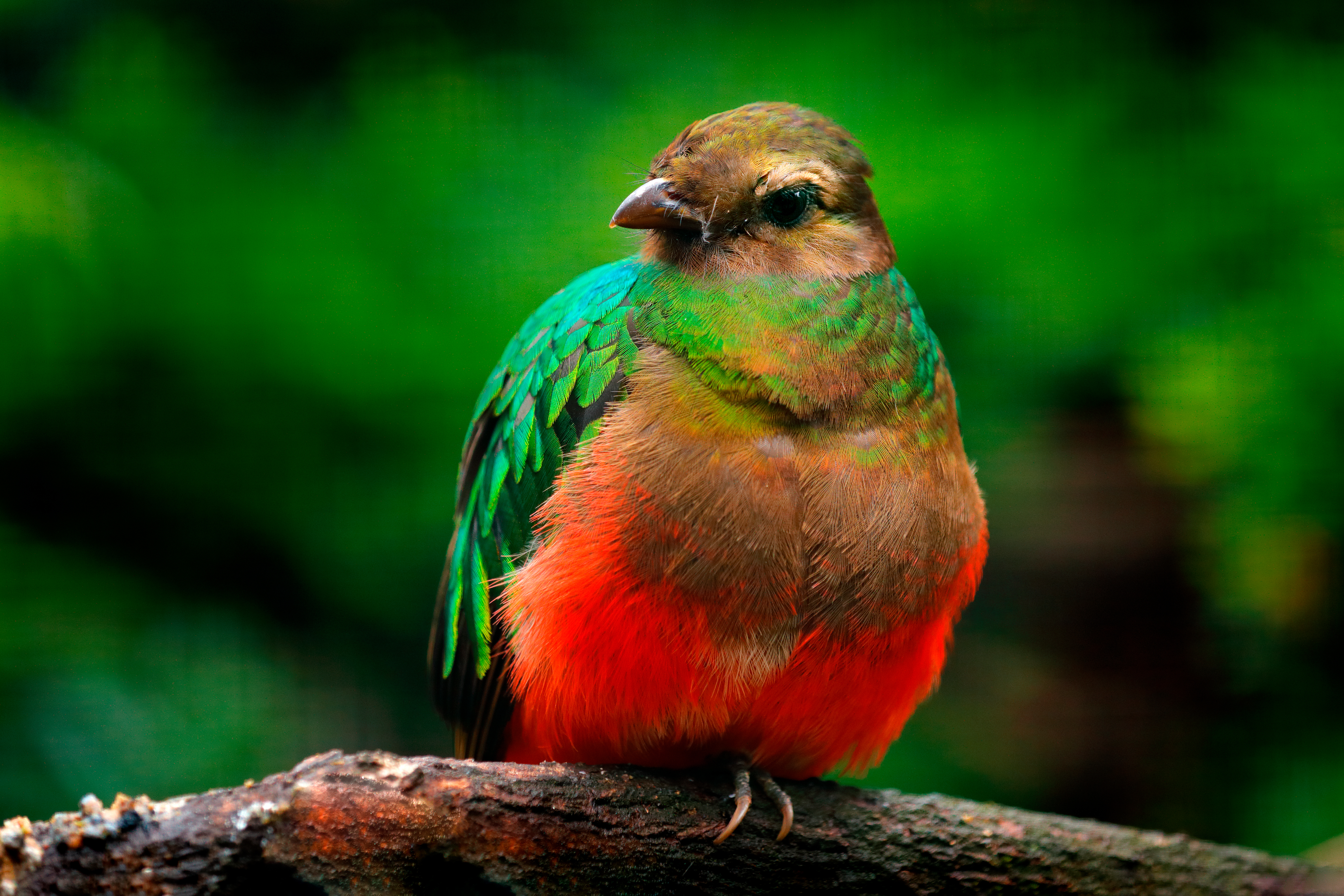Quetzal << keht SAHL >> is a forest bird known for its shiny feathers and vibrant colors. There are six species (kinds) of quetzals. Some are found in southern Mexico and Central America. Others are found in South America.
The resplendent quetzal is famous for the male’s striking appearance. The head, back, and chest are covered in metallic emerald-green feathers, and the underparts are crimson. The head has a crest of golden-green, hairlike feathers. The male’s showy upper tail feathers form a train about 2 feet (61 centimeters) long. When the bird flies, this long train ripples, resembling the motion of a snake. Some people think this appearance could have inspired the description of the feathered serpent god Quetzalcoatl.

Female quetzals generally have duller colors than the males. The female resplendent quetzal’s tail feathers have black and white bars on the underside. These tail feathers do not grow long like the male bird’s do.
Quetzal feet are small and weak. They have two toes pointing forward and two pointing backward. They cannot move the rear toes. Quetzals spend much of their time sitting quietly on a perch.
Quetzals nest in a hole in a dead tree. After mating, the female lays two to three blue eggs. The eggs hatch after 18 to 22 days. Both parents incubate eggs and care for hatchlings.
Adult quetzals chiefly eat fruit. Young quetzals eat fruit, insects, and small vertebrates (backboned animals) such as lizards. The pavonine quetzal has been observed eating tree frogs. Predators such as eagles, toucans, margays, kinkajous, and weasels hunt quetzals. But most predators hunt the young in the nest, not the adult birds.
Ancient Maya rulers used the long tail feathers of the quetzal as a symbol of authority. Today, the quetzal is the national bird of Guatemala, and the bird appears on that nation’s coat of arms. Many tourists travel to Central America to see quetzals.
In folklore, it is said that the resplendent quetzal loves freedom too much to survive captivity. By the early 2000’s, scientists had learned that resplendent quetzals cannot tolerate the iron that builds up in the body as a result of a captive diet. If quetzals are given an adjusted diet and expert care, they can survive in zoos. The first resplendent quetzal eggs to hatch in captivity hatched in 2003 in a zoo in Tuxtla Gutiérrez, Mexico.
See also Trogon.
Loading the player...
Resplendent quetzal


